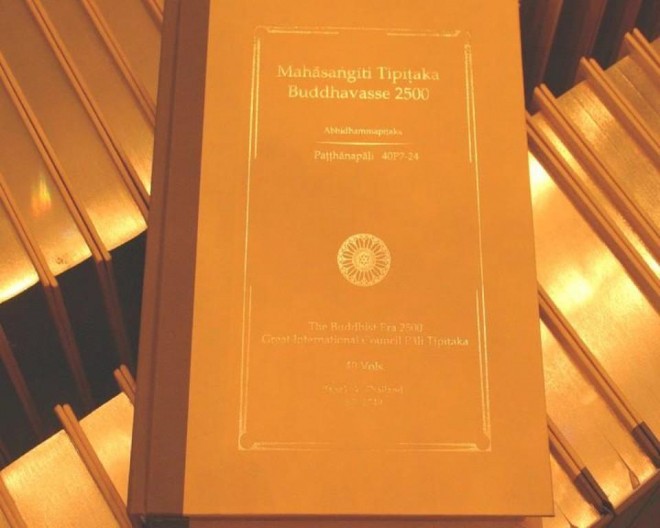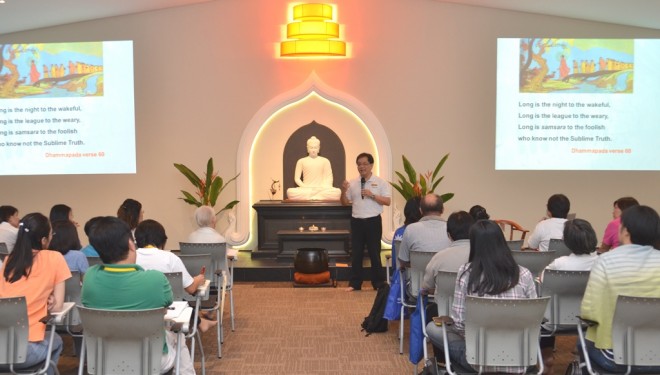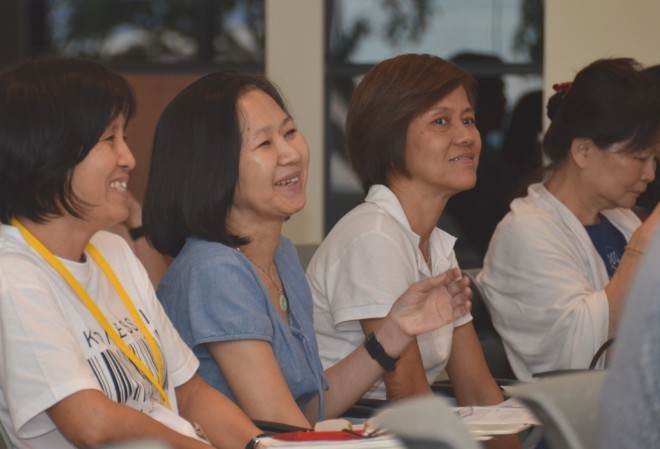History of Buddhist Texts and Scriptures
History of Buddhist Texts and Scriptures

The Pāli Tipiṭakā is recognised as the oldest and most complete collection of the Buddha’s Teaching.
On Saturday 17 October, the Director of Nalanda Institute Achariya Tan Siang Chye gave the last lecture of the BPS 303 – Certificate in Buddhist Studies course at Nalanda Centre. The topic was on the “Historical Development of Buddhist Texts and Scriptures”. Before passing away, the Buddha declared to his His disciples that, “the Dhamma and Vinaya (doctrine and discipline) I have set forth and laid down for you shall be your teacher after I am gone…” Thus, the Buddha did not appoint a successor but enshrined the Dhamma-vinaya as the guiding principle in one’s practice and quest for liberation.
To preserve the Buddha’s pristine teachings, the first Sangāyana (rehearsal or communal chanting) was held two months after His passing. Two Arahants – Elders Upāli and Ananda – praised by the Buddha as foremost among His followers, rehearsed the Vinaya and Dhamma respectively, to an assembly of 500 Arahants well-versed in the Dhamma-vinaya and skilful in linguistics. Their recitations were reviewed, approved and then chanted in unison by the congregation, thus was the inception of the Tipiṭakā as we know today.
Over 450 years later, during the Fourth Rehearsal, the decision was made to commit the Pāḷi Canon to writing on ola palm leaves. Hitherto, the Buddha’s teachings had been transmitted orally. At the Sixth Great International Rehearsal (1954-1956) in Yangon, Burma, the Pāḷi Canon was once again thoroughly checked with discrepancies corrected and the entire collection accurately preserved. The Pāli Tipiṭakā is recognised as the oldest, most complete and original collection of the Teachings of the Buddha.

Achariya Siang Chye gave the students an overall view of the history of Buddhist texts and scriptures.
We thank Achariya Tan Siang Chye for his lecture. For more interesting facts on the Pāḷi Tipiṭakā and Pāḷi Canonical Rehearsals, you may refer to www.nalanda.org.my/introducing-the-pali-tipitaka/ and www.nalanda.org.my/history-of-buddhism-pali-canonical-rehearsals/


